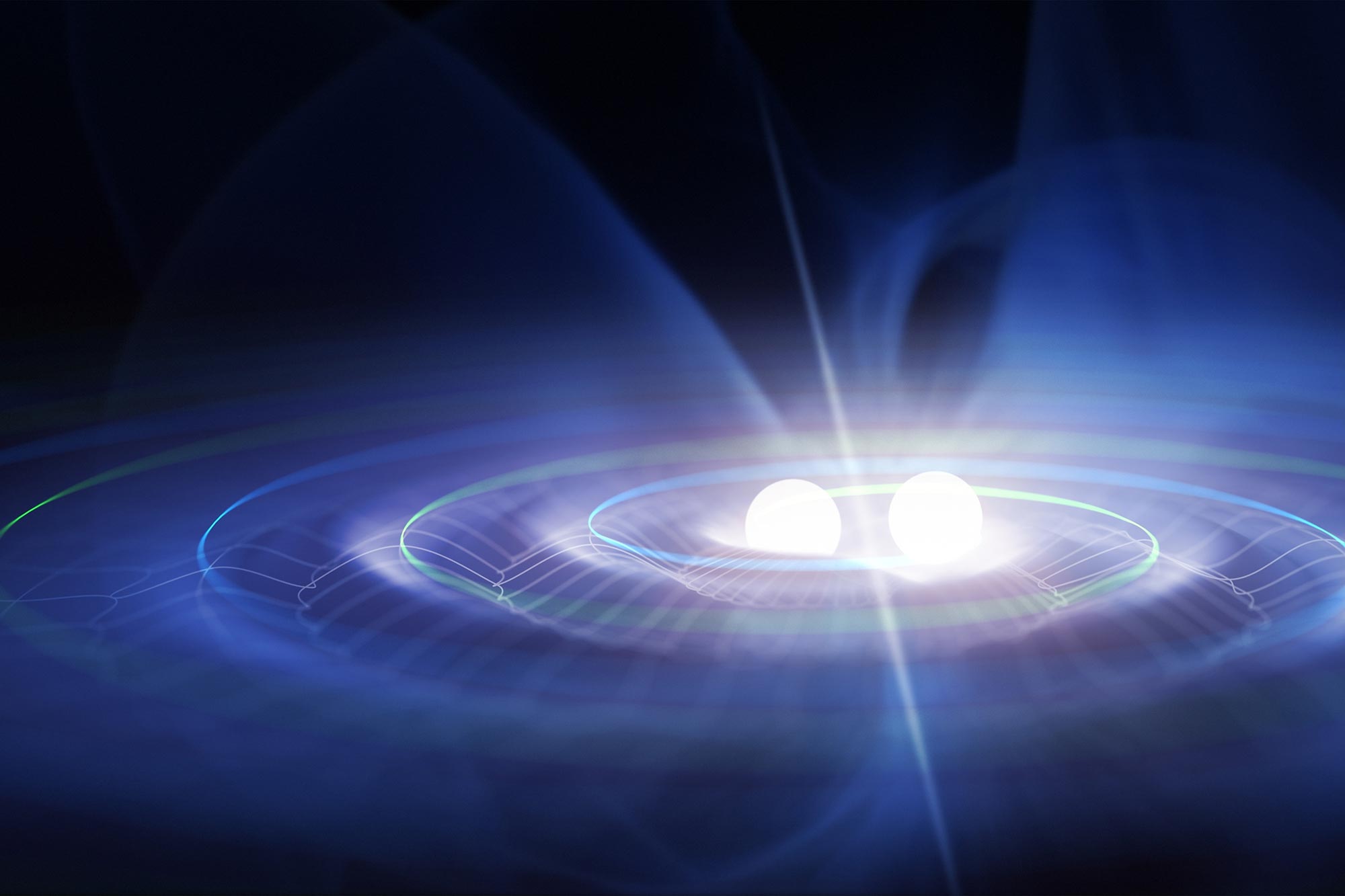
By

Artist’s illustration of gravitational waves.
Lasers support certain structures of light known as “eigenmodes.” An international collaboration of experts in gravitational waves, metasurfaces, and photonics has pioneered a new method to measure the amount of these eigenmodes with unprecedented sensitivity.
In gravitational wave detectors, several pairs of mirrors are used to increase the amount of laser light stored along the massive arms of the detector. However, each of these pairs has tiny distortions that scatter light away from the perfect shape of the laser beam. This scattering can cause excess noise in the detector, limiting sensitivity, and ultimately forcing the instrument to shut down.

Figure 1: False color image of laser eigenmodes that were tested. The color indicates the phase of the light. Red is 0 degrees, blue is 180 degrees. Credit: OzGrav
From the recently submitted study, Professor Andreas Freise (from Vrije Universiteit Amsterdam) says: “Gravitational wave detectors like LIGO, Virgo, and KAGRA store enormous amount of optical power – in this work, we wanted to test an idea that would let us zoom in on the laser beam and look for the small wiggles in power that can limit the detectors’ sensitivity.”
A similar problem is encountered in the telecoms industry where scientists want to use multiple eigenmodes to transport more data down optical fibers. OzGrav researcher and lead author Dr. Aaron Jones (The University of Western Australia) explains: “Telecoms scientists have developed a way to measure the eigenmodes using a simple apparatus, but it’s not sensitive enough for our purposes. We had the idea to use a metasurface and reached out to collaborators who could help us fabricate one.”

Figure 2: A schematic of the apparatus used by the researchers. f is the focal length of the lens. Credit: OzGrav
In the study, the proof-of-concept setup the team developed was over 1000x more sensitive than the original method developed by the telecoms scientists. The researchers will now look to translate this work into gravitational wave detectors, where the additional precision will be used to probe the interiors of neutron stars and test the fundamental limits of general relativity.
OzGrav Chief Investigator, Prof Zhao (from the University of Western Australia) says: “Solving the mode sensing problem in future gravitational wave detectors is essential, if we are to understand the insides of neutron stars.”
Written by Dr. Aaron Jones (The University of Western Australia).
Reference: “Metasurface Enhanced Spatial Mode Decomposition” by Aaron W. Jones, Mengyao Wang, Xuecai Zhang, Samuel J. Cooper, Shumei Chen, Conor M. Mow-Lowry and Andreas Freise, Accepted, Physical Review A.
arXiv:2109.04663

